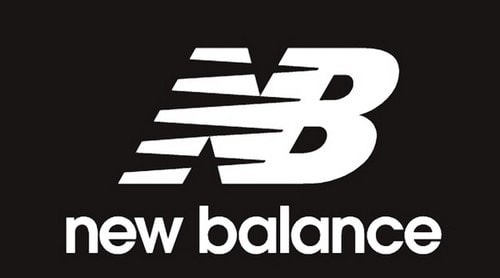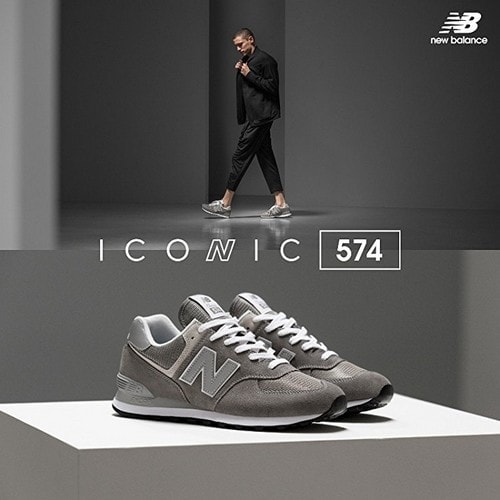The Marketing mix of New Balance analyses the 4Ps of New Balance, which includes the Product, Price, Place, and Promotion of New Balance. New Balance Athletics, Inc. is commonly referred to as New Balance. It is a private company of American origins. The company was founded in 1906 by its founder, Mitchell. New Balance is associated with the lifestyle and retail industry as it deals in apparel and accessories. It is one of the significant manufacturers in the sports footwear industry. The brand faces rivalry from the following companies.
- Liberty
- Bata
- Reebok
- Adidas
- Fila
- Converse
- Puma
- Nike
About New Balance
- Type: Multinational corporation
- Industry: Sportswear, footwear, and apparel
- Founded: 1906
- Founders: William J. Riley
- Headquarters: Boston, Massachusetts, United States
- Area served: Worldwide
- Current CEO: Jim Davis
- Number of employees: 39,000
- Major products: Footwear, apparel, and accessories for running, walking, training, and lifestyle
Table of Contents
New Balance Product Strategy
New Balance is one of the leading companies in the world in terms of sports accessories and apparel. The company is known to manufacture innovative features in its footwear, like heel counters, blended gel inserts, and several sizes, particularly very wide or narrow widths. New Balance offers its products in several sizes for men, women, and kids. It also manufactures customized footwear. Its diversified product portfolio includes
Men
Apparel
- Recently reduced clothing
- Gear and Accessories
- Socks
- Pants
- Shorts
- Hoodies and Jackets
- Sleeve shirts and sleeve shirts
Footwear
- Wide shoes
- Sandals
- Recently reduced shoes
- Work Shoes
- Lacrosse
- Golf shoes
- Tennis shoes
- Soccer shoes
- Boots
- Trail and hiking footwear
- Skateboarding shoes
- Baseball shoes
- Walking shoes
- Training shoes
- Lifestyle shoes
- Running shoes
Women
Apparel
- Recently reduced clothing
- Gear and Accessories
- Socks
- Dresses and skirts
- Capris and Pants
- Shorts
- Hoodies and Jackets
- Sleeve shirts and sleeve shirts
- Sports bra
- Tank tops
Footwear
- Recently reduced shoes
- Wide shoes
- Sandals
- Work Shoes
- Lacrosse
- Golf shoes
- Softball shoes
- Tennis shoes
- Boots
- Trail and Hiking
- Walking Shoes
- Training Shoes
- Lifestyle
- Running Shoes
Boys
Apparel
- Recently reduced clothing
- Gear and Accessories
- Socks
- Bottoms
- Tops
Footwear
- Wide shoes
- Sports shoes
- Sandals
- Training Shoes
- Lifestyle
- Running shoes
- Recently reduced shoes
Girls
Apparel
- Recently reduced clothing
- Gear and Accessories
- Socks
- Bottoms
- Tops
Footwear
- Recently reduced shoes
- Wide shoes
- Sports shoes
- Sandals
- Training Shoes
- Lifestyle
- Running shoes
Customized footwear
Baseball
- 3000v3
- 4040v4 Turf
- 4040v4
Lifestyle
- 574 the Icon
- 300 The Classic
- 998 The Trendsetter
- 990v3 The Performer
New Balance offers various products, primarily athletic and casual footwear, apparel, and accessories.
The product mix of New Balance’s target audience in 2023 is as follows (Source)
- Athletic Footwear: New Balance is well-known for its high-quality running shoes, offering a variety of models for different types of runners, from casual joggers to professional athletes. They also provide shoes for other sports, such as basketball, tennis, and golf.
- Lifestyle Sneakers: Alongside their athletic shoes, they have a strong presence in the lifestyle sneaker market. These shoes are designed for everyday wear, combining comfort with style, and often feature retro and classic designs.
- Apparel: Their clothing line includes a wide range of athletic wear, such as t-shirts, shorts, leggings, and jackets. These are designed for various activities, including running, training, and yoga. They also offer casual wear that aligns with their lifestyle sneaker range.
- Accessories: New Balance also produces accessories like socks, hats, bags, and sports equipment. These products are often designed to complement their footwear and apparel lines.
- Kids’ Products: They offer a selection of children’s footwear and apparel, catering to the needs of young athletes and active kids.
- Specialized Gear: New Balance provides gear for specific needs, such as shoes with enhanced stability for overpronators, lightweight performance shoes for competitive runners, and walking shoes designed for comfort and support.
- Collaborations and Limited Editions: Occasionally, New Balance collaborates with designers, artists, and other brands to create unique, limited-edition footwear and apparel.
- Customization Services: In some regions, they offer services to customize shoes, allowing customers to select colors and materials to create a personalized look.
This product and marketing mix reflects New Balance’s commitment to combining performance with style, catering to athletes and fashion-conscious consumers.
New Balance Place Strategy
New Balance is a multinational organization headquartered in Brighton in the United States. It has spread its product presence in overseas markets to include one hundred and twenty countries via two thousand and five hundred associates. It has twelve fully-owned subsidiary companies, joint ventures, several licenses, and distributors spread across the globe. Its products are available in South Africa, China, Japan, Canada, the United Kingdom, New Zealand, Australia, and the United States.
New Balance has manufacturing facilities in the United Kingdom and the United States and has recently opened another in China. Nearly 30% of the footwear for the European market is manufactured at its facility in Flimby En, gland. In India, New Balance opened its first outlet in Delhi and entered into a partnership deal with e-tailer platform Jabong to sell its products via its online portal.
New Balance has an organized distribution channel so that its products reach the consumer market easily. The company sells via its branded stores along with multi-brand retail stores. It has more than two hundred outlets to its name. The company also markets its products via its website and other online stores with which it has entered into partnership deals. The websites offer several options in color and size to attract customers.
New Balance place strategy is as follows:
- Global Retail Presence: New Balance has a strong retail presence with stores in major cities worldwide, providing wide accessibility to their products.
- Online Sales Platforms: They have a robust e-commerce platform and partnerships with online retailers, making their products readily available to a global audience.
- Selective Distribution: The brand utilizes selective distribution by placing products in high-end sports outlets and specialized shoe stores to target specific market segments.
- Manufacturing Locations: New Balance maintains manufacturing facilities in the United States and the United Kingdom, positioning itself as a brand with domestically produced options in these markets.
- Community and Event Engagement: They actively participate in community events and sponsorships, especially in running events, to enhance brand visibility and engagement with potential customers.
New Balance Pricing Strategy
By the end of the financial year 2015, New Balance posted its revenues at 3.7 billion US dollars. The company has targeted young men, women, and children from the upper middle class as its target market of customers who are sports enthusiasts. It is positioned as an athletic-based brand offering premium products.
New Balance incurs higher manufacturing costs, and as their costing is high, the brand has to keep its product prices at upper levels to earn revenues. The company’s product prices are more significant than those of its competitors. The brand offers premium and technologically superior quality goods to offer a balance. It has adopted an advertising strategy and a premium pricing policy for its premium products. New Balance provides value to its customers by differentiating their products with innovative features.
New Balance’s pricing, marketing management, and distribution strategy demonstrate a keen understanding of its market position and consumer base. They’ve crafted a strategy that balances quality, brand value, and market competitiveness, aligning with their brand ethos.
- Premium Pricing for Performance Products: New Balance adopts a premium pricing strategy for its high-end performance shoes. This reflects the advanced technology, research, and development of these products, catering to severe athletes and enthusiasts seeking top-tier performance gear.
- Competitive Pricing for Lifestyle Products: In the lifestyle segment, New Balance sets competitive prices with other major lifestyle and athletic brands. This approach makes their products accessible to a broader consumer base, balancing quality with affordability.
- Tiered Pricing Structure: They employ a tiered pricing structure across their product lines. This allows them to cater to various segments, from budget-conscious buyers to those seeking luxury or highly specialized athletic gear.
- Seasonal and Promotional Discounts: New Balance utilizes strategic discounting, including seasonal sales and promotions, to attract customers and maintain market relevance, especially in the highly competitive casual footwear and apparel segments.
- Dynamic Pricing in E-commerce: Leveraging their online platform, they engage in dynamic pricing strategies, where prices might vary based on demand, inventory levels, and consumer behavior analytics, ensuring competitiveness in the digital marketplace.
This multifaceted approach to marketing strategy allows New Balance to maintain its status as a premium brand while remaining competitive and accessible in various market segments.
New Balance Promotion Strategy
New Balance is a well-known brand that has adopted several marketing strategies to gain brand equity and awareness in the consumer market. It has created marvelous ad campaigns on television, sports magazines, and social media platforms. The company has its website and other distribution channels such as Facebook, Twitter, and YouTube to handle its promotional activities.
New Balance has been part of philanthropic activities for many years. They have started manufacturing with zero waste as part of their eco-friendly activities. The brand offers a 10% discount to students to create a target audience of customers at an early age.
New Balance has entered several partnership and sponsorship deals to increase its brand, customer loyalty, and visibility. In February 2015, it entered into a sponsorship deal of 40 million dollars/year with Liverpool. New Balance dressed the Chilean Olympic Committee at Rio and the Olympic Council of Ireland in 2016. The company has signed several athletes like Stephanie Twell and, in 2015, Trayvon Bromell. New Balance sponsors the Barbuda National Team, the Antigua National Team, and the New Zealand National Team.
It has entered into a partnership deal with Matt Bonner and provided him with footwear for several years along with James Worthy of the Los Angeles Lakers. In 2015, the company signed a deal with Cricket South Africa and, in 2017, with England and Wales Cricket Board to become their Kit supplier. New Balance shoes also sponsor several cricketers like Dale Steyn, Yasir Shah, Colin Munro, Aaron Finch, Gary Balance, and Mathew Wade.
New Balance promotion strategy is as follows:
- Brand Endorsements and Sponsorships: They collaborate with athletes and sports teams globally for endorsements and sponsor major sporting events to enhance brand visibility and credibility.
- Digital Marketing and Social Media Engagement: Utilizing digital platforms and social media for marketing campaigns, New Balance connects with a more comprehensive, tech-savvy audience, often leveraging influencer partnerships.
- Community Initiatives and Grassroots Marketing: The company engages in community programs and grassroots marketing efforts, focusing on local events and initiatives to build a loyal customer base.
Some Recent Video ads and Print ads of New Balance are:
Liked this post? Check out the complete series on Marketing Mix

